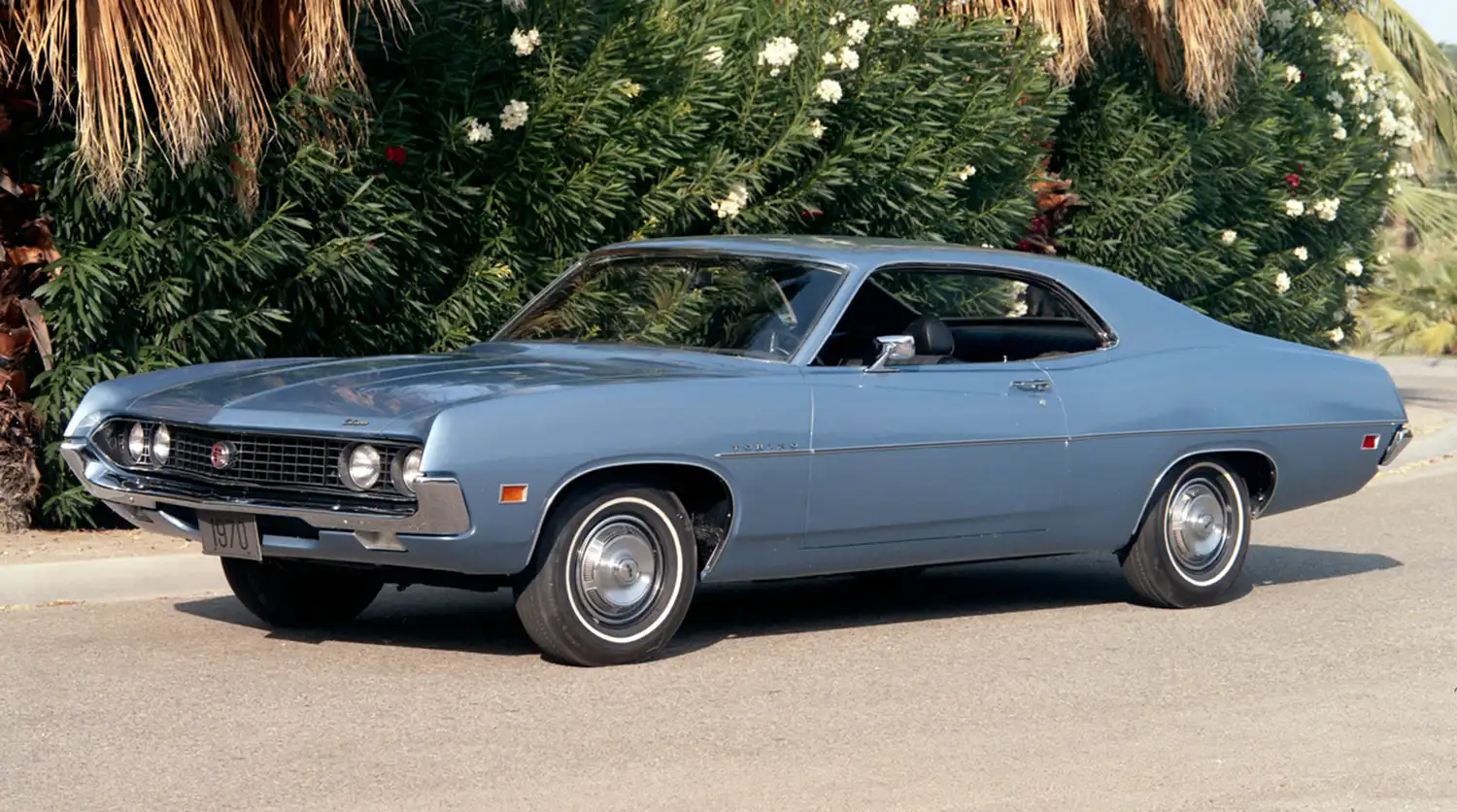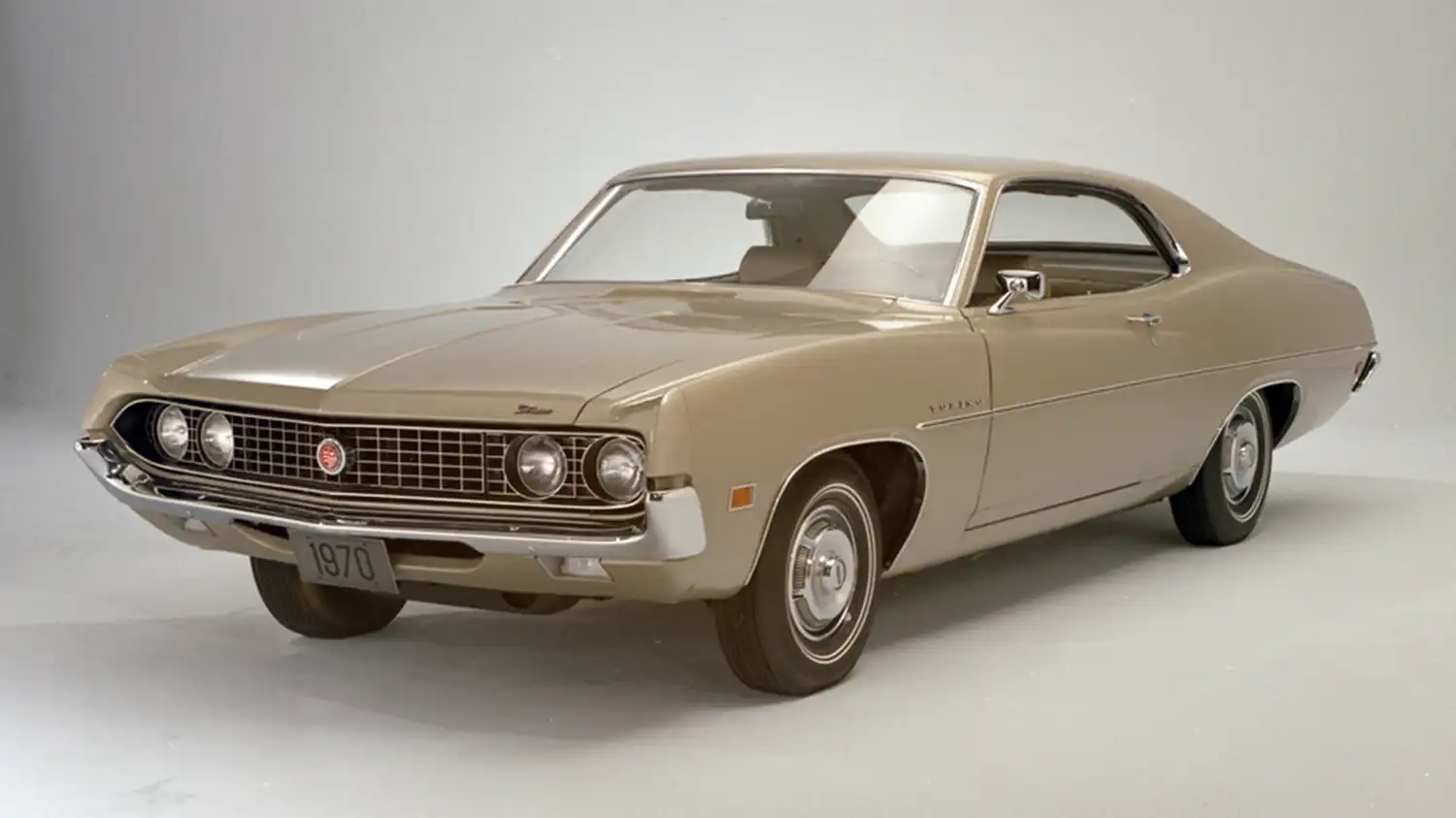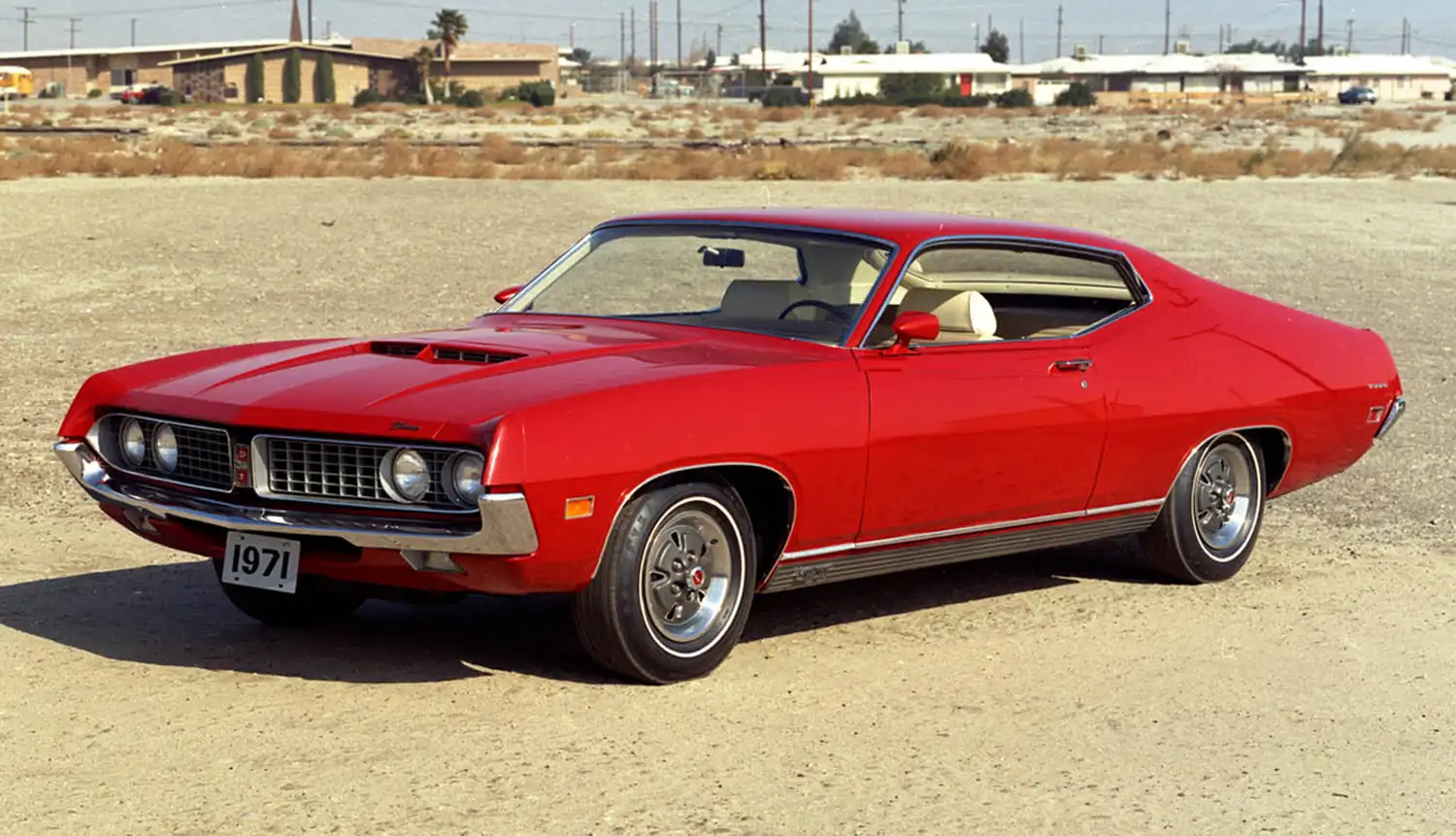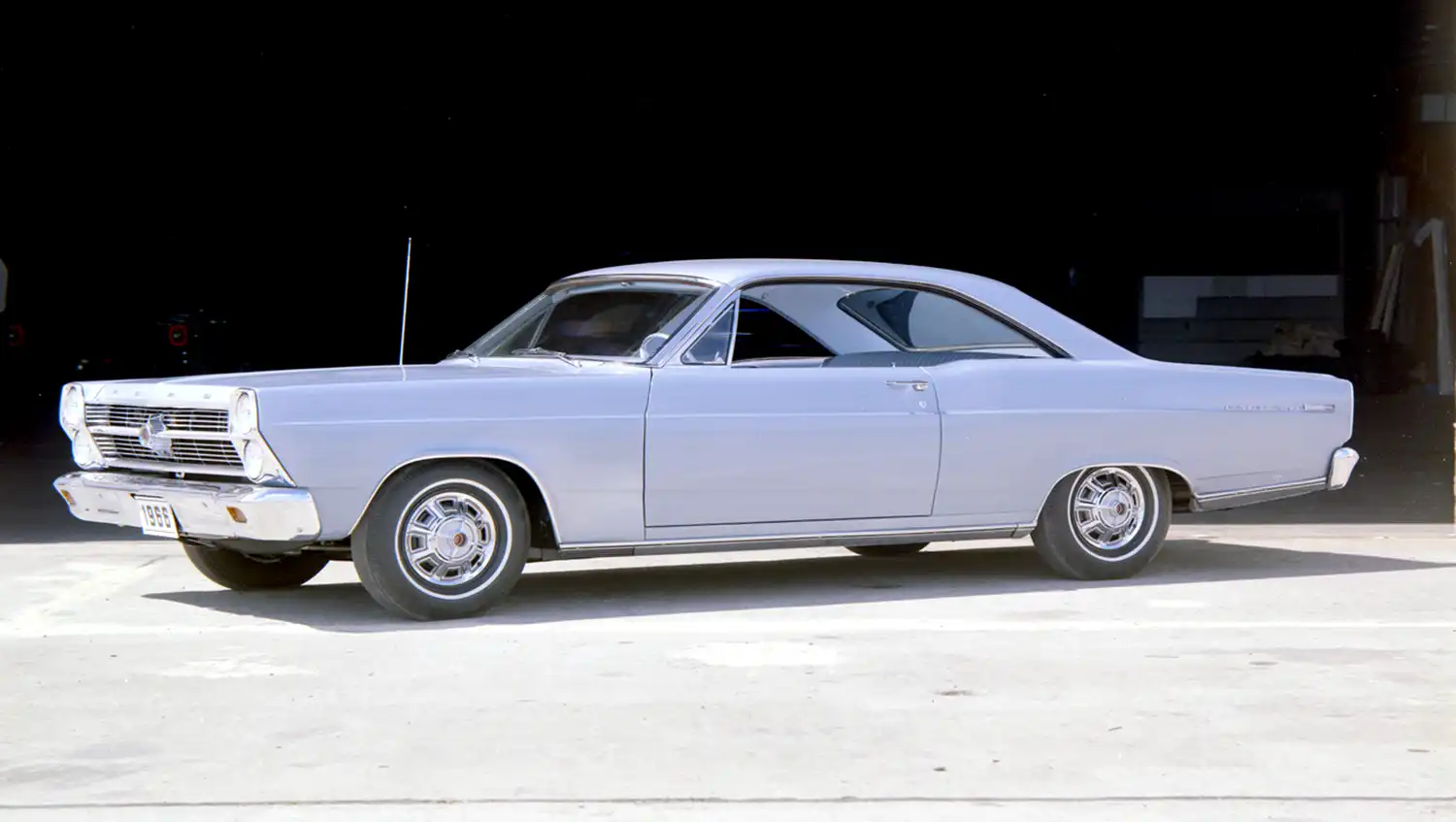
The 1970 Ford Torino two-door hardtop emerged as a significant player in the muscle car landscape of its era. Evolving from the Ford Fairlane line, which had its beginnings in the early 1960s as a mid-sized offering, the Torino nameplate was introduced in 1968 as a more upscale subseries. By 1970, the Torino had effectively replaced the Fairlane as Ford’s primary intermediate model. The two-door hardtop body style, with its sleek lines and sporty appeal, became particularly popular, embodying the spirit of American performance and style during a vibrant period in automotive history.
Sleek and Aerodynamic Styling: The 1970 Ford Torino two-door hardtop showcased a distinctive design that marked a departure from its Fairlane predecessors. Featuring a long hood, a relatively short decklid, and a flowing fastback roofline on some models, the Torino presented a more muscular and aerodynamic profile. The front end typically incorporated a prominent grille, often with concealed headlights on higher trim levels like the GT. The sides were characterized by clean lines and subtle curves, while the rear featured horizontal taillights that spanned a significant portion of the car’s width. This styling contributed to the Torino’s broad appeal, attracting buyers looking for both performance and visual flair. Different trim levels, such as the base Torino, the Brougham (emphasizing luxury), and the GT (the performance-oriented version), featured unique exterior details, including badging, trim, and wheel options, further differentiating the models within the Torino lineup.
Potent Engine Options and Performance: The 1970 Ford Torino two-door hardtop offered a range of engine options catering to various performance preferences. The standard engine was typically an inline-six cylinder, providing adequate power for everyday driving. However, it was the availability of Ford’s V8 engines that truly defined the Torino’s muscle car credentials. These included various displacements of the Windsor and Cleveland V8 families, ranging from the 302 cubic inch to the formidable 429 cubic inch Cobra Jet and Super Cobra Jet engines.
Highlighting the Performance Engines: The performance-oriented Torino GT, in particular, could be equipped with these high-output V8s. The 429 Cobra Jet engine, with its aggressive camshaft, high-flow cylinder heads, and four-barrel carburetor, was rated at 370 horsepower and 450 lb-ft of torque. The even more potent 429 Super Cobra Jet version, often equipped with a Drag Pack option that included a Hurst shifter and a shorter rear axle ratio, boasted similar horsepower figures but was optimized for drag racing performance. These engines delivered impressive acceleration and top-end speed, firmly placing the Torino GT in the muscle car arena. Depending on the engine and options, the Torino could achieve 0-60 mph times in the low six-second range and quarter-mile times in the mid-14-second range, making it a serious contender against its rivals from Chevrolet, Dodge, and Plymouth.
Transmission and Handling: The 1970 Ford Torino two-door hardtop offered a choice of transmissions to complement its engine options. A three-speed manual transmission was standard on many models, while a four-speed manual with a Hurst shifter was available, particularly with the higher-performance engines, providing a more engaging driving experience. Ford’s SelectShift Cruise-O-Matic automatic transmission was also a popular choice, offering smooth and convenient shifting. The Torino’s handling was typical of American muscle cars of the era, prioritizing straight-line performance over nimble cornering. However, options like power steering and various suspension packages could improve the driving dynamics to some extent. The standard suspension consisted of independent front suspension with coil springs and a live axle rear suspension with leaf springs.
Interior Features and Options: The interior of the 1970 Ford Torino two-door hardtop was designed with a focus on comfort and convenience, with sporty touches in the GT trim. Bench seats were standard, but bucket seats were available, often paired with a center console that housed the shifter for manual or floor-mounted automatic transmissions. The dashboard featured a straightforward layout with a prominent speedometer and gauges for fuel level and engine temperature. Options included a tachometer, often found in the GT, as well as features like air conditioning, power windows, power locks, and various audio systems. The Torino Brougham trim emphasized luxury with upgraded upholstery, sound insulation, and additional convenience features.
Legacy and Collectibility: The 1970 Ford Torino two-door hardtop, especially in its high-performance GT guise with the 429 Cobra Jet or Super Cobra Jet engine, has become a highly collectible muscle car. Its combination of stylish design and potent performance, along with its relative rarity compared to some other muscle car icons, contributes to its desirability among enthusiasts. The Torino’s influence can also be seen in its NASCAR success, with the aerodynamic fastback body style proving to be highly competitive on the oval tracks. Today, well-preserved or meticulously restored examples of the 1970 Torino GT command significant prices in the classic car market, representing a significant piece of American muscle car history. The Torino’s blend of style, power, and available luxury made it a compelling choice for buyers in 1970 and continues to resonate with automotive enthusiasts today.
Summary:
- The 1970 Ford Torino two-door hardtop evolved from the Ford Fairlane.
- It featured sleek and aerodynamic styling.
- A range of engines was available, including potent 429 Cobra Jet V8s.
- Performance-oriented GT models offered high horsepower and torque.
- Available with manual and automatic transmissions.
- Interior options ranged from basic to luxurious Brougham trim.
- High-performance versions are now highly collectible.
- The Torino also had a successful NASCAR career.
Disclaimer: Information regarding vintage automobiles can vary. Accuracy of specifications and production numbers is based on available historical data and may contain slight discrepancies.
Source: Ford Heritage Vault
AI Assistance: Gemini







